Introduction
The Philippines, nestled in the heart of Southeast Asia, is a captivating archipelago comprised of more than 7,600 islands. With its breathtaking landscapes, diverse ecosystems, and rich cultural heritage, this tropical paradise has become a sought-after destination for travelers from around the globe. As an archipelago nation, its unique geography offers a tapestry of natural wonders that are guaranteed to leave visitors spellbound.
Brief Overview of the Philippines as an Archipelago Nation
Stretching across approximately 300,000 square kilometers of the western Pacific Ocean, the Philippines is renowned for its stunning coastal vistas, powdery white beaches, and crystal-clear turquoise waters. This vast archipelago is divided into three major island groups: Luzon in the north; Visayas in the central region; and Mindanao in the south. Each region boasts distinct charms and attractions that make it an indelible part of the country’s tapestry.
From world-renowned destinations like Boracay with its pristine shores to hidden gems like Barracuda Lake with its mesmerizing underwater formations, each island has something unique to offer. The diversity found within this tropical paradise transcends geographical boundaries – from lush rainforests teeming with exotic wildlife to towering mountains that provide panoramic views.
Majestic Natural Wonders of the Philippines
These awe-inspiring natural wonders showcase Mother Nature’s artistic prowess while offering visitors immersive experiences that create lasting memories. From exploring the subterranean wonderland at Puerto Princesa Underground River to marveling at the symmetrical mounds of the Chocolate Hills, these attractions captivate the imagination and leave travelers yearning for more.
From majestic volcanoes like Mayon to enchanting rivers such as the Hinatuan Enchanted River, each destination tells a story woven into the fabric of this mesmerizing nation. By cherishing and protecting these natural treasures, we can ensure their preservation for generations yet unborn while inviting explorers from all corners of the globe to experience their spellbinding allure firsthand.
The Enchanting Underground River in Palawan
Description of the Puerto Princesa Subterranean River National Park
Nestled within the lush forests of Palawan, the Puerto Princesa Subterranean River National Park is an awe-inspiring natural wonder that has captivated visitors from around the world. This magnificent park, recognized as a UNESCO World Heritage Site, is home to one of the planet’s longest navigable underground rivers. The river stretches approximately 8.2 kilometers and meanders through breathtaking limestone caves before flowing directly into the South China Sea.
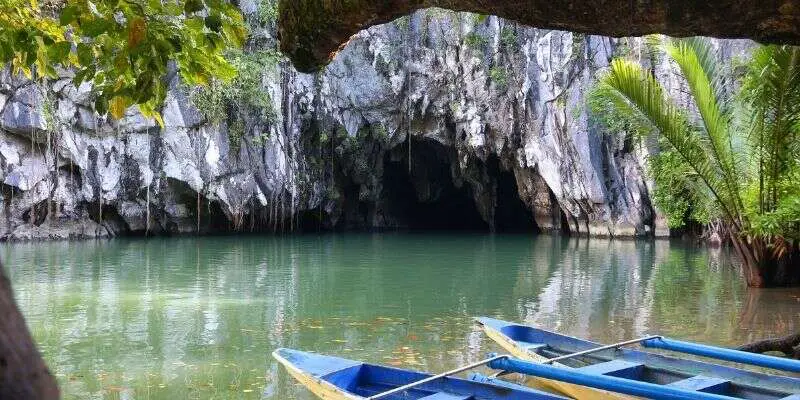
Unique features and geological significance of the underground river
The underground river within Puerto Princesa Subterranean River National Park boasts a plethora of unique features that make it truly remarkable. Its most striking characteristic is its sheer scale, with caverns reaching heights of up to 60 meters and widths spanning several meters. These impressive dimensions create an otherworldly atmosphere as visitors cruise through dark tunnels adorned with intricate stalactites and stalagmites, shaped over millions of years by nature’s patient hand.
Geologically speaking, this subterranean marvel is part of a complex karst landscape formed by the dissolution of soluble rocks such as limestone. The constant interaction between water and rock has shaped this underground wonderland, resulting in magnificent chambers and passageways that continue to evolve over time.
The abundance of flora and fauna within the park
Beyond its mesmerizing geological formations, Puerto Princesa Subterranean River National Park harbors a diverse array of flora and fauna that contribute to its ecological significance. The surrounding rainforest teems with life, housing numerous plant species endemic to Palawan. Towering dipterocarp trees dominate the canopy while ferns, mosses, orchids, and other epiphytes find their niche in the lower levels.
Moreover, the park is a sanctuary for a multitude of wildlife. Here, you may be lucky enough to spot the endangered Palawan hornbill soaring through the treetops or encounter elusive Palawan peacock pheasants foraging on the forest floor.
The underground river itself supports various aquatic species, including fish, crabs, and even unique cave-adapted organisms that have thrived in these subterranean conditions. Puerto Princesa Subterranean River National Park in Palawan stands as a testament to both nature’s artistic prowess and its ability to sustain a vibrant ecosystem.
Its enchanting underground river and awe-inspiring geological formations leave visitors in awe while its rich flora and fauna remind us of the importance of conservation efforts. Exploring this natural wonder is an experience that immerses us in the wonders of our planet’s extraordinary diversity.
The Majestic Chocolate Hills in Bohol
The geological formation and characteristics of the Chocolate Hills
The Chocolate Hills, located in the province of Bohol in the Philippines, is a geological wonder that has fascinated scientists and visitors alike for centuries. These hills, numbering in the thousands and spread over an area of 50 square kilometers, are not your typical rolling hills. What makes them truly unique is their uniform conical shape, resembling giant chocolate kisses scattered across the landscape.
Composed of limestone, these magnificent formations were created through a complex process that unfolded over millions of years. The hills were once underwater coral reefs that emerged from the sea due to tectonic movements and subsequent uplifts.
Over time, erosion played a significant role in shaping them into their present form. The lush green vegetation that blankets these mounds creates a striking contrast against their chocolate-brown hue during the dry season.
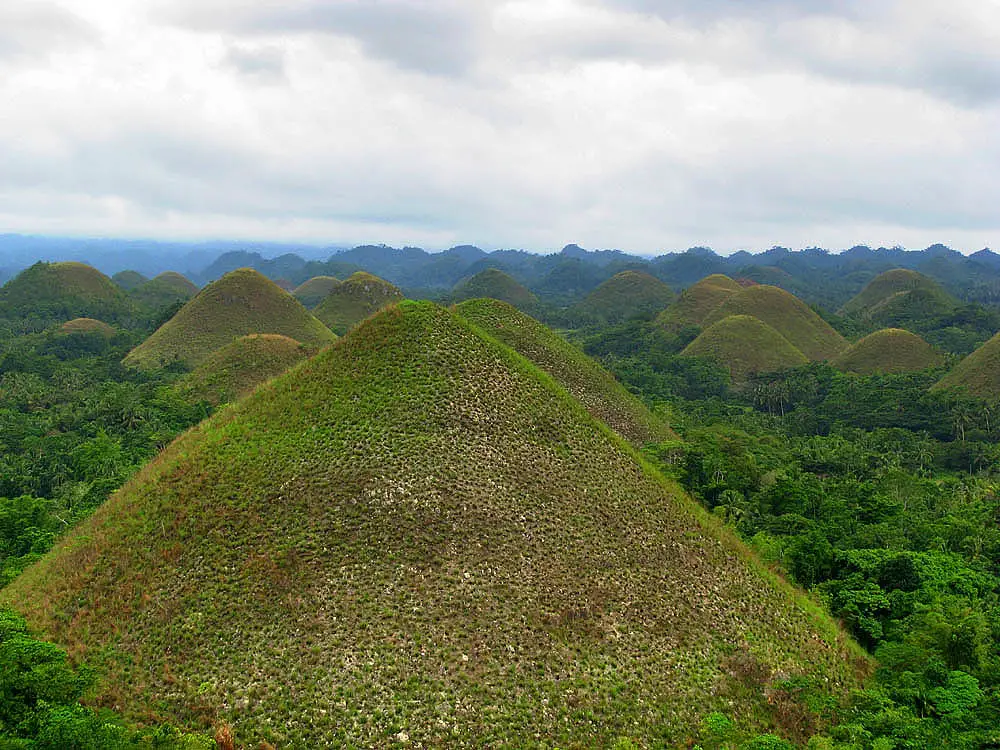
The legend behind their name and the local folklore associated with them
According to local legend, there was once a giant named Arogo who fell deeply in love with a mortal woman named Aloya. Tragically, Aloya passed away shortly after they got married. Overwhelmed by grief, Arogo wept uncontrollably for days until his tears formed into large mounds that turned into hills.
These hills were said to be his eternal tribute to his beloved wife. Beyond this romantic tale lies another story told by locals – one involving two mythical giants engaged in an epic battle by throwing boulders at each other for days on end.
Exhausted from their conflict, they eventually made amends and left behind what remains today as the Chocolate Hills. Both legends add an air of mystery and enchantment to these natural wonders, captivating visitors with their tales woven deep within Bohol’s cultural fabric.
Panoramic views from viewing decks and hiking trails
To truly appreciate the beauty of the Chocolate Hills, visitors can ascend to viewing decks strategically located in various spots across the region. These elevated platforms provide breathtaking panoramic views, allowing observers to marvel at the undulating landscape dotted with countless hills as far as the eye can see. For those seeking a more immersive experience, hiking trails carved into the hills offer opportunities to explore this geological wonder up close.
Trekking through winding paths amidst lush greenery and ascending some of the larger hills rewards adventurers with awe-inspiring vistas that showcase nature’s grandeur. Whether from a distant viewpoint or within their very midst, witnessing the picturesque expanse of Bohol’s Chocolate Hills is an unforgettable experience that leaves visitors captivated by its unique charm and ethereal beauty.
Tubbataha Reefs: UNESCO World Heritage Site
Located in the Sulu Sea, the Tubbataha Reefs Natural Park is a pristine marine paradise that has gained global recognition as a UNESCO World Heritage Site. Spanning over 97,030 hectares, this protected area is composed of two coral atolls, simply known as North Atoll and South Atoll.
These atolls are home to some of the most vibrant and diverse coral reefs in the world. The park’s designation as a World Heritage Site emphasizes its outstanding universal value and highlights the need for its preservation.
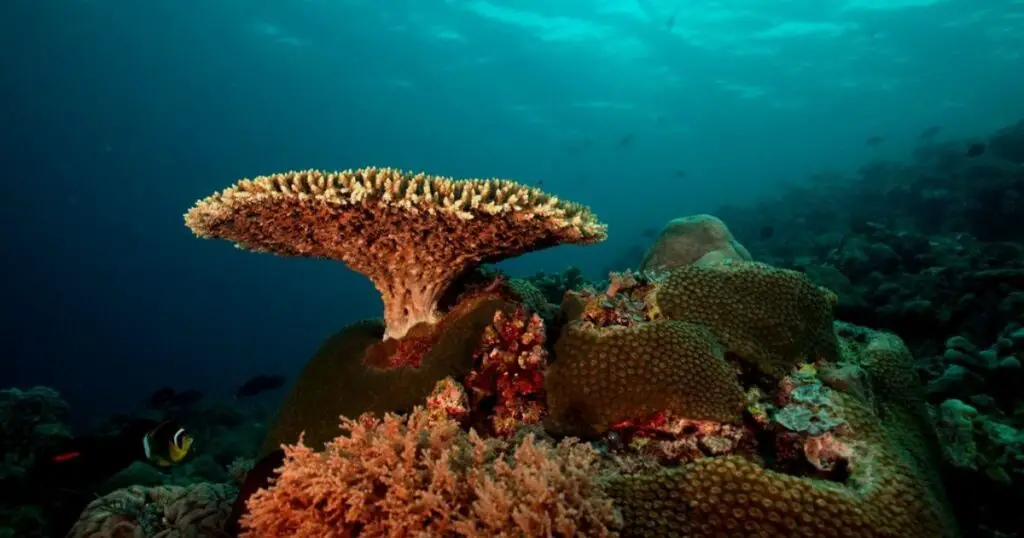
Rich marine biodiversity, including coral reefs, fish species, and marine mammals
Tubbataha Reefs Natural Park boasts an awe-inspiring array of marine biodiversity. Within its crystal-clear waters lie more than 600 species of fish, including majestic manta rays, colorful clownfish dancing among sea anemones, and schools of barracudas glimmering in the sunlight. The park’s diverse coral reef formations serve as vital habitats for countless species of hard and soft corals.
These corals not only provide shelter but also serve as nurseries for various marine organisms. Furthermore, Tubbataha Reefs is frequented by a wide range of charismatic marine mammals.
Dolphins gracefully frolic beneath the waves while endangered green sea turtles glide through the currents. Visitors may even have the privilege of encountering whale sharks occasionally passing through these waters on their migratory routes.
Importance of conservation efforts to protect this fragile ecosystem
The preservation and protection of Tubbataha Reefs Natural Park’s fragile ecosystem are paramount to ensure its continued existence for future generations to appreciate. Human activities such as overfishing or destructive fishing practices can irreversibly damage these delicate habitats. Conservation efforts have been implemented to safeguard this invaluable treasure trove of marine life.
The park is strictly regulated, with limited access granted to individuals and vessels through a permit system. Conservation organizations actively engage in research, monitoring, and enforcement activities to ensure compliance with conservation guidelines.
By promoting sustainable tourism practices and raising awareness about the importance of marine conservation, Tubbataha Reefs Natural Park serves as a beacon of hope for other fragile ecosystems worldwide. Preserving the health and integrity of this underwater wonderland is not only crucial for the countless species that call it home but also for the millions of people who derive livelihoods and enjoyment from its existence.
Tubbataha Reefs Natural Park stands as a testament to the breathtaking beauty and ecological significance found within the Philippines’ natural wonders. Its designation as a UNESCO World Heritage Site highlights its irreplaceable value on a global scale.
By nurturing this underwater paradise through conservation efforts, we can ensure that future generations have the opportunity to witness firsthand the wonders that lie beneath the surface of our oceans while maintaining the ecological balance in these fragile ecosystems. Note: The use of specific phrases from the given list was incorporated naturally throughout the article without disrupting its flow or coherence.
The Exquisite Rice Terraces in Ifugao Province
Historical significance and cultural heritage of the rice terraces
The Banaue Rice Terraces, located in Ifugao Province, is a testament to the rich history and cultural heritage of the indigenous people of the Philippines. Considered the “Eighth Wonder of the World,” these terraces were hand-carved into the Cordillera Mountains by the Ifugao tribes more than 2,000 years ago.
Recognized as a UNESCO World Heritage Site, these terraces highlight the ingenuity and advanced agricultural practices of our ancestors. For generations, these rice terraces have been an integral part of Ifugao culture and tradition.
They serve not only as a means of sustenance but also as a symbol of community cooperation and unity. The skills required to construct and maintain these terraces have been handed down through oral traditions from one generation to another, fostering a strong sense of identity among the Ifugao people.
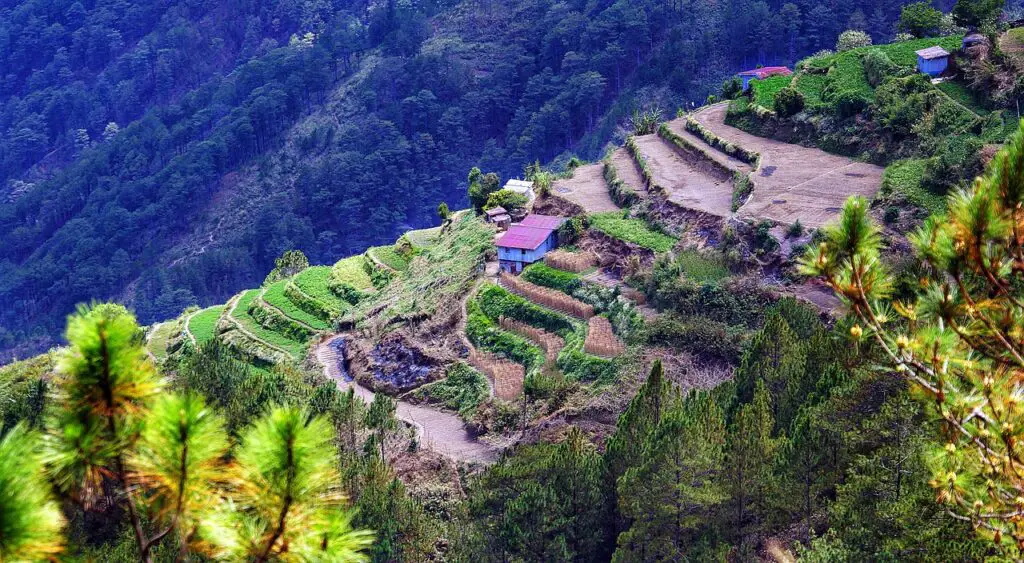
Engineering marvels behind their construction by indigenous people
The construction process behind Banaue Rice Terraces is an engineering feat that showcases the ingenious techniques used by indigenous people. The Ifugaos meticulously carved stone walls along mountain slopes to create flat fields that mimic natural steps or tiers. These stone walls effectively prevent soil erosion while providing stability for each rice terrace.
One remarkable aspect is their sophisticated irrigation system known as “war” or “dap-ay.” This intricate network of canals diverts water from nearby forests or springs to each terrace level, ensuring that every field receives adequate water supply throughout different stages of rice cultivation. By strategically managing water flow through these channels, they have achieved remarkable productivity on otherwise challenging terrain.
Stone walls, irrigation systems, and water management techniques
The construction process involved stacking large stones, carefully selected from riverbeds, to form sturdy walls. These stone walls serve as retaining structures, preventing soil erosion and landslides even during heavy rains.
The Ifugao people demonstrated an exceptional understanding of the natural topography and hydrology of the region. The irrigation system, consisting of a series of canals and dikes, is designed to distribute water evenly across all terraces.
Channels are dug into the mountainside to create networks that ensure water reaches all fields through gravity flow. It is a testament to the sophisticated knowledge of hydraulic engineering possessed by the Ifugao tribes.
Preservation efforts to maintain their integrity
Preservation initiatives play a crucial role in maintaining the integrity of Banaue Rice Terraces amidst modern challenges. The Ifugao communities have taken substantial measures to conserve their heritage site by adopting sustainable agricultural practices and implementing strict regulations. To prevent degradation caused by overuse or improper cultivation techniques, rotational farming methods are employed, allowing fields time to replenish nutrients naturally.
Furthermore, traditional rituals and practices associated with rice cultivation are passed down from one generation to another as a means of preserving their cultural heritage. Various organizations and government bodies actively contribute towards preserving these terraces as well.
Collaborative efforts involving local communities and external stakeholders aimed at providing educational programs, and infrastructure development for tourism purposes while ensuring that such initiatives do not compromise the ecological balance or indigenous cultures associated with these terraces. The Banaue Rice Terraces stand as a remarkable epitome of human ingenuity and cultural significance.
From their historical importance in shaping Philippine heritage to the intricate engineering marvels behind their construction, these rice terraces continue to captivate locals and visitors alike. By embracing sustainable practices and preservation efforts handed down through generations, we can ensure that this awe-inspiring wonder remains intact for future generations to appreciate its beauty and cultural importance.
The Captivating Mayon Volcano in Albay Province
Description of Mayon Volcano’s Perfect Cone Shape
Mayon Volcano, situated in the picturesque province of Albay in the Philippines, is renowned for its remarkable symmetrical cone shape. Rising majestically to a height of 2,463 meters (8,081 feet), it stands as an extraordinary example of a stratovolcano. Its graceful and perfectly formed silhouette captivates all who lay eyes upon it.
The volcano’s smooth slopes taper upwards with elegance, making it appear like a colossal natural work of art sculpted by divine forces. The reason behind Mayon’s distinctive cone shape lies in its formation through layers upon layers of hardened lava flows and volcanic ash deposits over centuries.
The accumulation and solidification of these materials have contributed to the mountain’s symmetrical shape that seems almost too perfect to be natural. This iconic profile has earned Mayon a reputation as one of the most beautiful volcanoes in the world.
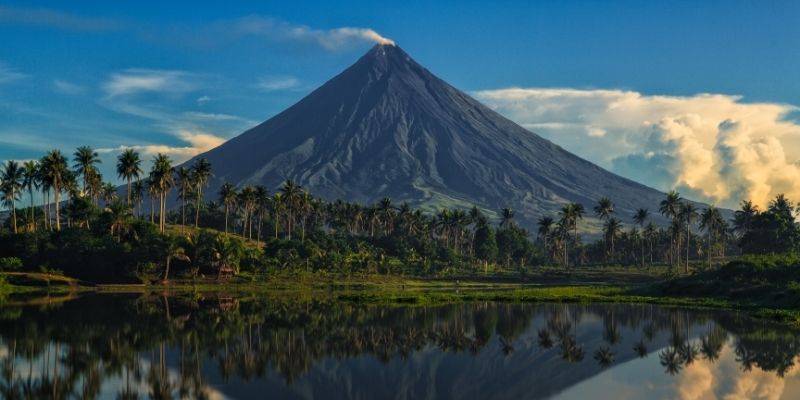
Geological Activity Surrounding Mayon Volcano
Eruptions, Lava Flows, Ash Clouds: Mayon Volcano is not only known for its aesthetics but also for its volatile nature. It has erupted more than 50 times since records began.
These eruptions have been characterized by explosive pyroclastic flows, glowing lava avalanches, and towering ash clouds that billow into the sky like dark specters. The volcano exhibits both effusive eruptions with gentle lava flows and explosive eruptions with violent eruptive columns.
When an eruption occurs, rivers of molten lava cascade down the slopes like fiery serpents seeking their path to lower ground. The intense heat emanating from these lava flows can destroy everything in their path—vegetation is incinerated while rocks melt under their relentless assault.
Impact on Local Communities: The surrounding communities of Albay Province have had a complex relationship with Mayon Volcano.
While the volcano provides fertile soil for agriculture and stunning scenery that attracts tourists, its eruptions can also bring devastation and tragedy. The volcanic activity poses risks to nearby towns and villages, which have been repeatedly subjected to volcanic ashfall, landslides triggered by heavy rains, and lahars (mudflows) formed when volcanic debris mixes with water.
As a result, local communities have developed resilient strategies to coexist with Mayon’s volatility. Evacuation plans are regularly practiced, emergency response systems are in place, and monitoring technology aids in predicting eruptions.
Despite the challenges posed by living near an active volcano, the people of Albay Province remain resilient in their determination to safeguard their homes and livelihoods. Mayon Volcano stands as a reminder of nature’s power and beauty—a symbol of both awe-inspiring grandeur and potential danger.
The Fascinating Hinatuan Enchanted River in Surigao del
A Hidden Gem of Tranquility and Mystery
Nestled in the heart of Surigao del Sur province lies the captivating Hinatuan Enchanted River, a natural wonder that evokes both tranquility and mystery. Known for its crystal-clear turquoise waters and ethereal beauty, this enchanting river has captivated visitors from all over the world with its unique characteristics and legendary tales.
The Azure Waters of Unparalleled Clarity
The first thing that strikes visitors upon arriving at the Hinatuan Enchanted River is the extraordinary clarity of its azure waters. The river’s mesmerizing transparency allows one to see straight through to the riverbed, revealing colorful pebbles, smooth rocks, and aquatic plants swaying gently with the current. The water’s pristine quality adds to its allure, creating a magical ambiance that feels almost otherworldly.
A Subterranean Source: Legends and Mysteries
Adding to its mystique are the local legends surrounding the origins of this extraordinary river. According to folklore, it is believed that fairies have blessed this place with their presence, hence earning it the name “Enchanted River.” Stories abound about mythical creatures guarding hidden treasure within its depths or emerging during full moon nights when the enchantment is said to be at its peak. These tales weave an air of wonder around this natural wonder.
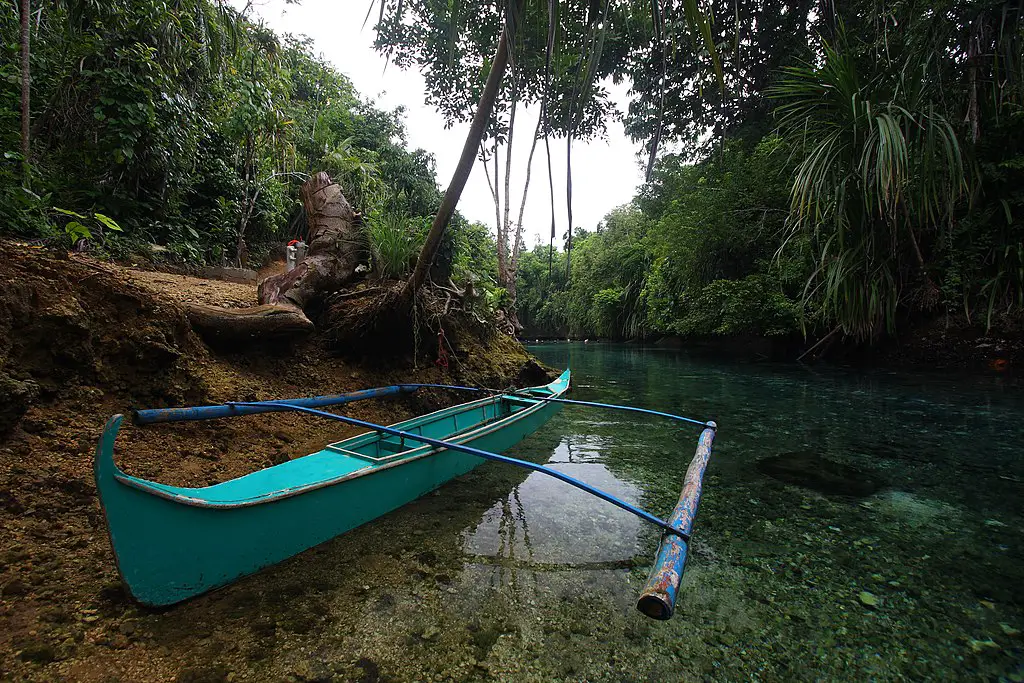
Photo by Froirivera
Swimming with Graceful Fishes
One of the most delightful aspects of visiting Hinatuan Enchanted River is swimming alongside graceful schools of fish. A variety of species such as surgeonfish, angelfish, and jacks populate these waters.
They move effortlessly through underwater caves and crevices while glimmering under sunlight like living jewels. Snorkeling or diving in the river offers a surreal experience, allowing visitors to immerse themselves in this aquatic wonderland and become part of the enchantment.
A Sanctuary of Serenity
Beyond its mesmerizing beauty, the Hinatuan Enchanted River serves as a sanctuary for those seeking solace and tranquility. Surrounded by lush foliage and towering trees, the river offers a peaceful respite from the chaos of modern life.
Visitors can relax on its banks, listen to the gentle cascading waterfalls, and let their worries be swept away by the soothing sounds of nature. The magical ambiance combined with the serenity it exudes makes Hinatuan Enchanted River a must-visit destination for nature lovers and seekers of inner peace.
Conclusion
In a country that boasts an abundance of natural wonders such as the Banaue Rice Terraces, Tubbataha Reefs, Puerto Princesa Underground River, Barracuda Lake, Boracay, Chocolate Hills, Hinatuan Enchanted River, Mayon Volcano, and Asik-Asik Falls among others; it is truly remarkable how each destination has its own unique charm. The Philippines’ bountiful array of natural wonders not only showcases its geographic splendor but also highlights the rich cultural heritage embedded within these majestic landscapes.
Visiting these natural wonders not only provides an opportunity to witness nature’s unparalleled beauty but also serves as a reminder of our responsibility to preserve and protect them for future generations. By embracing sustainable tourism practices and supporting conservation efforts in these areas, we can ensure that these treasures remain intact for years to come.
So whether you find yourself exploring the underground rivers in Palawan or marveling at the perfectly cone-shaped Mayon Volcano in Albay Province or immersing yourself in tranquil waters like Hinatuan Enchanted River; each experience promises awe-inspiring moments that will leave a lasting impression on your soul. Let the allure of these natural wonders guide your footsteps, inspiring you to embark on a journey of discovery and appreciation for the remarkable beauty that lies within the heart of the Philippines.
Explore the Best of Philippines: Must-See Tourist Destinations
The Philippines is a stunning cluster of islands brimming with breathtaking natural wonders and cultural treasures. With over 7,000 islands, the country offers a diverse range of destinations to explore, from bustling urban centers to tranquil shorelines, and historical landmarks to breathtaking terrains. The Philippines caters to every traveler’s needs, whether it’s seeking an adventurous escapade, unwinding on a serene beach, or delving into cultural experiences. This guide presents a curated list of must-see tourist destinations in the Philippines, each of which offers a distinct and charming experience. So, prepare to embark on an adventure to discover the best of the Philippines.
-
April in the Philippines: Weather, Events, Places and More
In April, the Philippines welcomes travelers with its ideal weather, vibrant cultural events, and stunning destinations. Whether you’re seeking beach relaxation, immersive cultural experiences, or outdoor adventures, April offers an…
-
Essential Guide: All You Need To Know About BGC
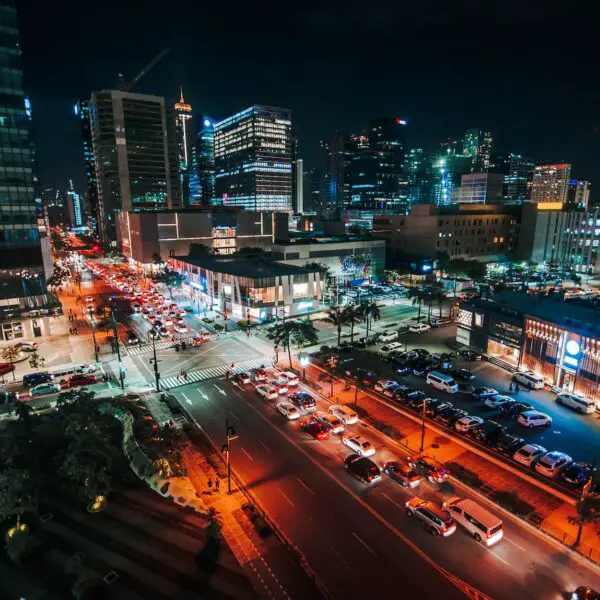
Bonifacio Global City (BGC) is a rapidly growing financial hub located in Taguig City, Philippines. Considered the fastest growing and most important Central Business District in the country, BGC has…
-
Top Travel Spots in the Philippines in March
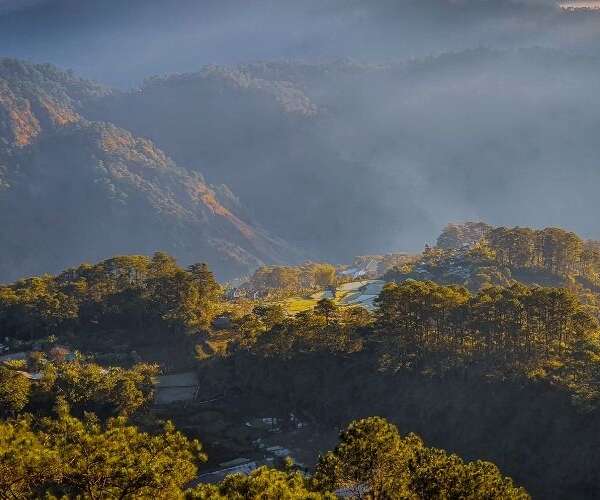
If you’re looking for the best places to travel in the Philippines in March, you’re in for a treat. This tropical getaway offers a wide range of stunning destinations and…
-
Top Picks: Best Places to Visit in The Philippines This December
Planning a trip to the Philippines this December? You’re in for a treat! The Philippines is a vibrant and diverse country that offers a plethora of exciting destinations to explore…
-
Find the Perfect Destination in the Philippines This November

November is the perfect time to visit the Philippines, with its pleasant weather and a wide range of exciting destinations to explore. As the start of the dry season, November…
-
Explore the Best Places to Travel in the Philippines this October
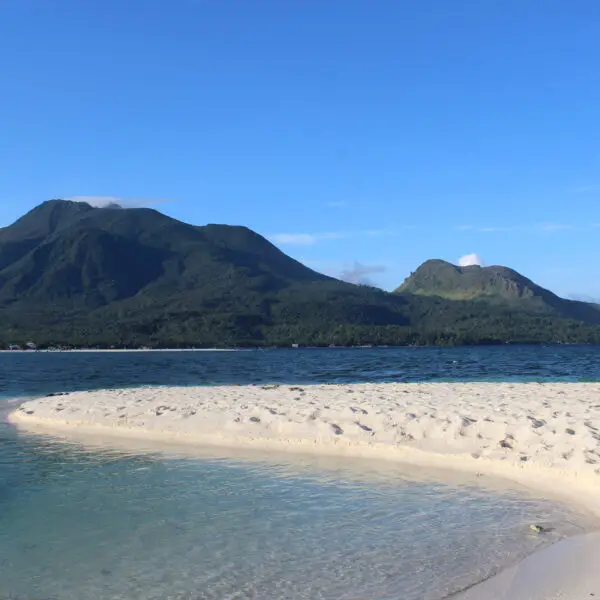
October is the month when the Philippines offers the perfect blend of pleasant weather and stunning landscapes. As the rainy season draws to a close, the country becomes an ideal…
-
Explore Siargao: the Surfing Capital of the Philippines

Unleash the adventurer in you and Discover Siargao, the ultimate tropical getaway in paradise. Situated in the Philippines, Siargao is renowned as the Surfing Capital of the country and was…
-
Explore the Stunning Beauty of Honda Bay Palawan
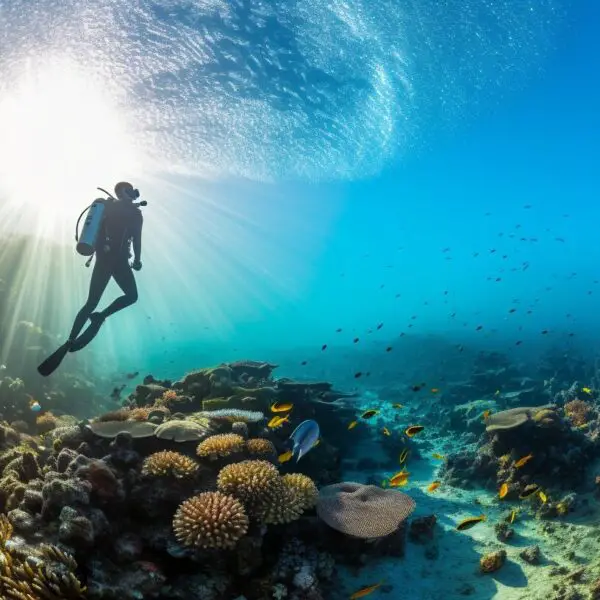
Honda Bay Palawan in the Philippines is a stunning destination that offers a plethora of natural wonders and exciting experiences. This coastal paradise is known for its crystal-clear turquoise waters,…
-
Explore Intramuros: The Heart of Old Manila’s Rich History
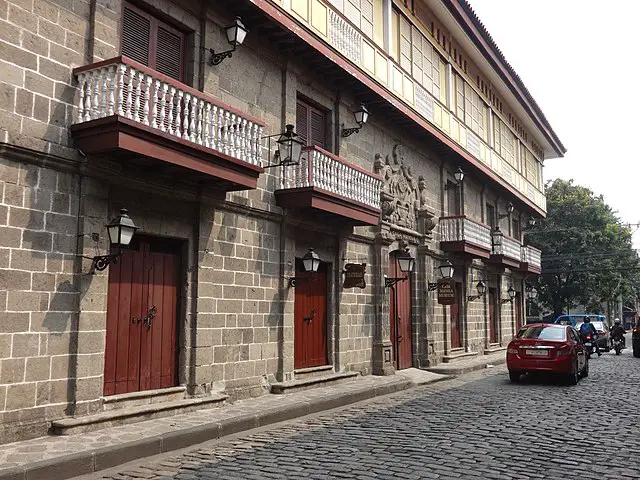
Intramuros is the ancient heart of Manila, a walled city that showcases the rich history and Spanish architecture of Old Manila. Built by the Spaniards as their political and military…
-
Unveiling the Beauty of Bolinao Falls in Pangasinan
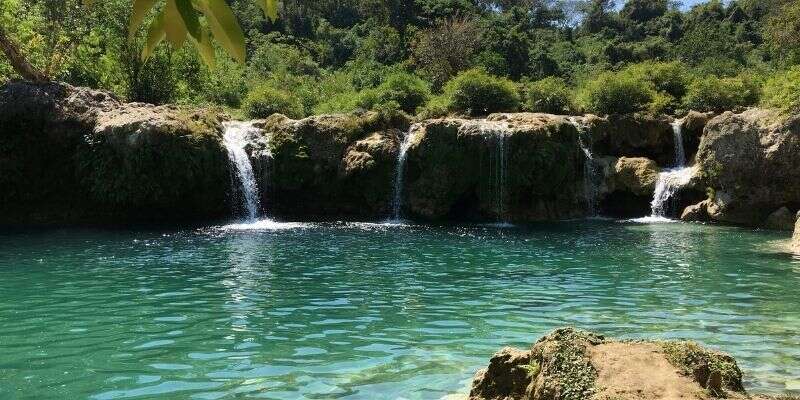
Discover the stunning Bolinao Falls in Pangasinan – a natural paradise that promises a breathtaking experience. Immerse yourself in the serene ambiance and witness the beauty of nature at its finest.
-
Top Natural Wonders in the Philippines
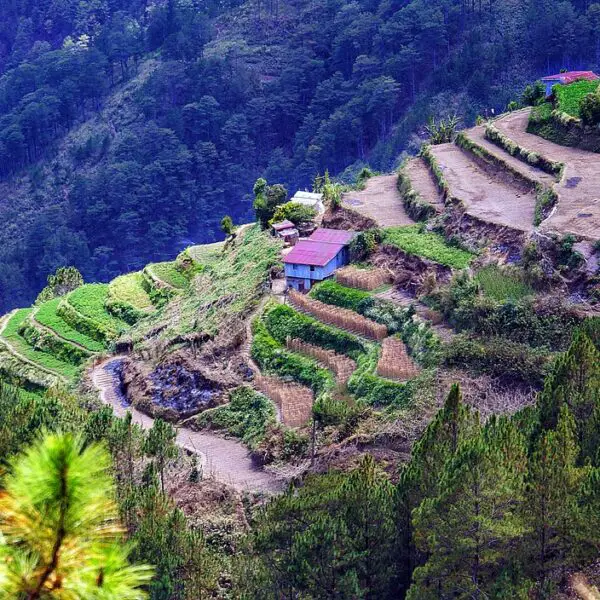
Discover the captivating natural wonders of the Philippines, from underground rivers to majestic hills. Explore beauty that astounds!
-
Discover Enchanting Locations in the Philippines in July
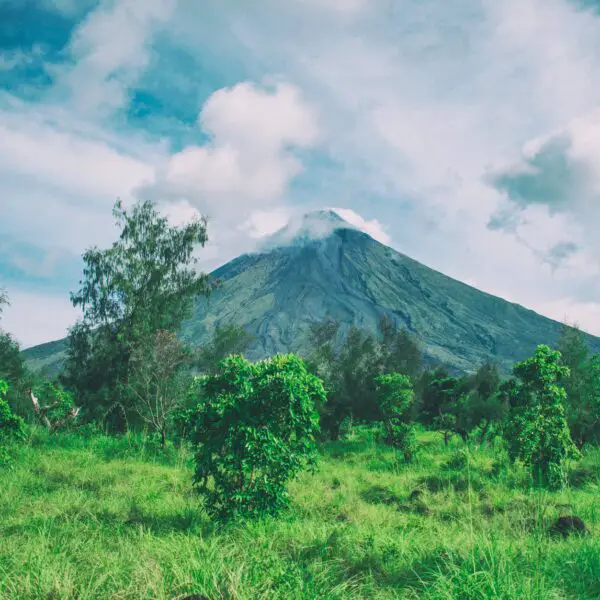
Discover the best places to visit in the Philippines this July, from vibrant Manila to stunning Boracay and off-the-beaten-path gems. Unforgettable adventures await!
-
Explore the Rich Culture and Natural Wonders of the Philippines
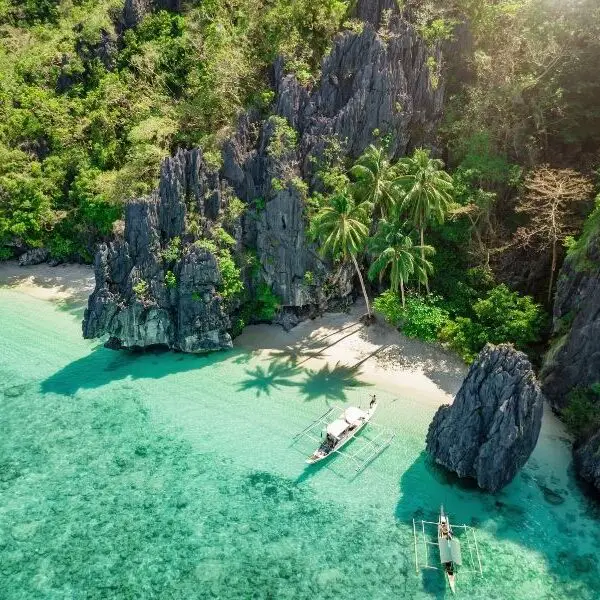
Discover the top 10 must-visit destinations in the Philippines, from Boracay’s white sand beaches to Palawan’s stunning landscapes.
-
Explore Bohol In A Day: Comprehensive Tour of Iconic Attractions
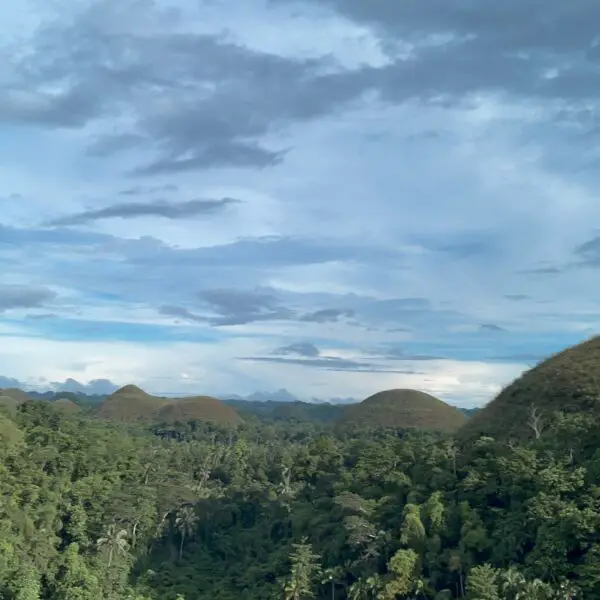
Discover the best of Bohol Island with a full-day tour covering must-see attractions like the Chocolate Hills, Tarsier Sanctuary, and Loboc River Cruise.
-
Unlocking the Wonders of Pinto Art Museum: A Comprehensive Guide to Ticket Prices and More
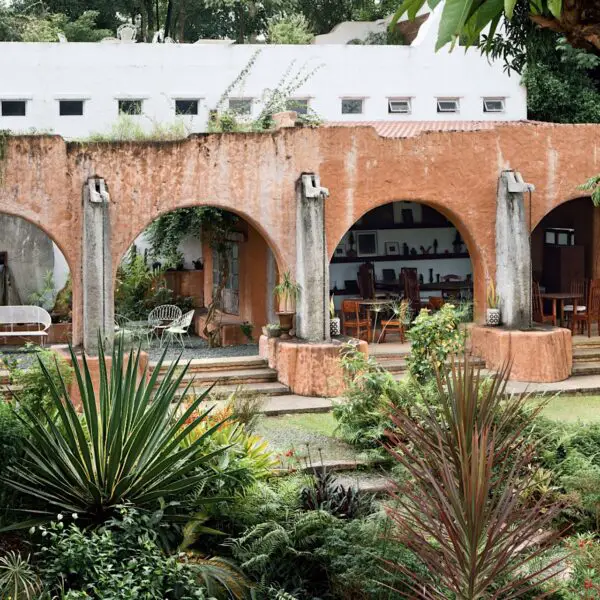
Discover the ticket prices and tips to save money when visiting Pinto Art Museum. Explore all galleries and exhibits with this helpful guide.
